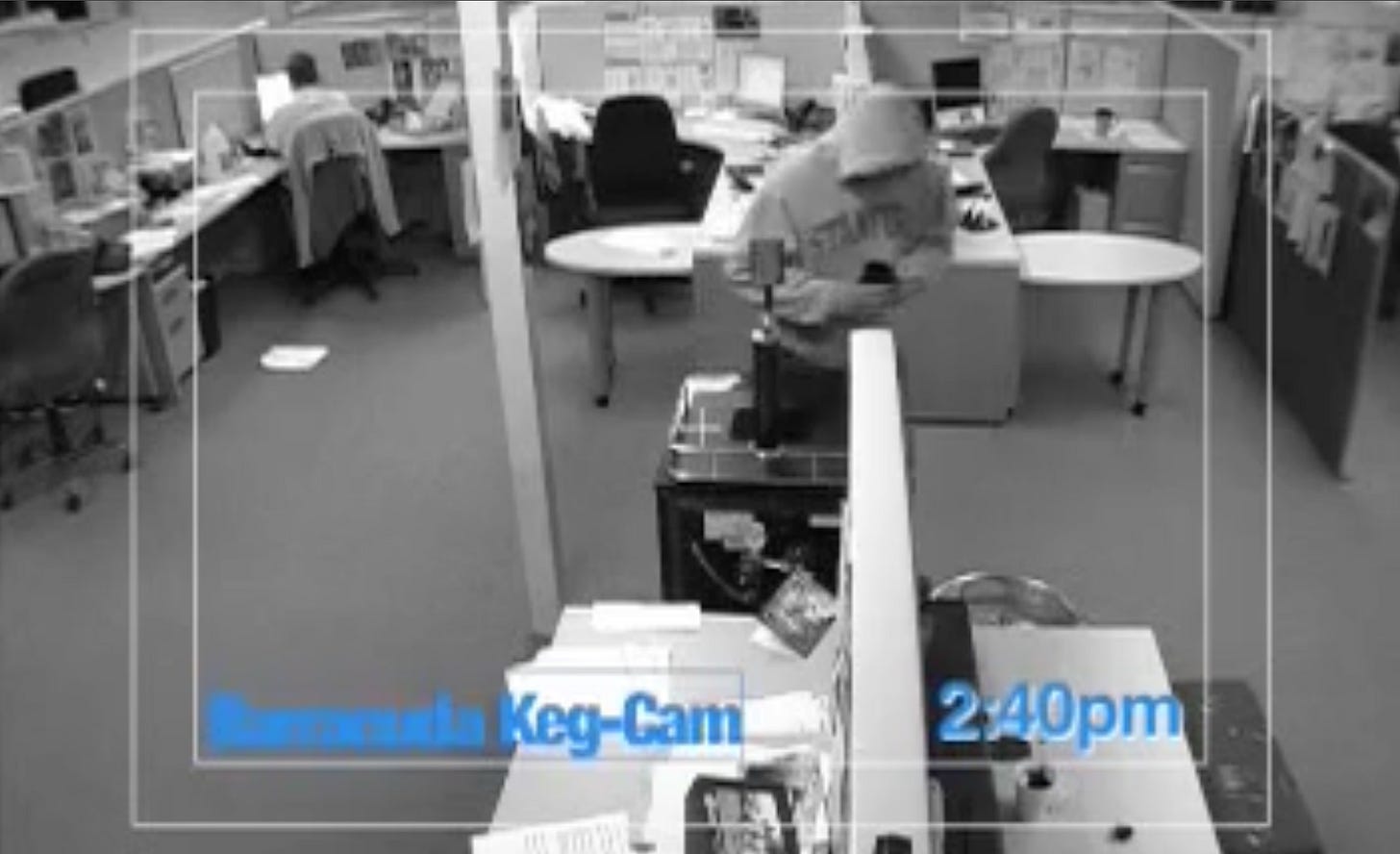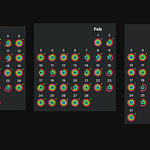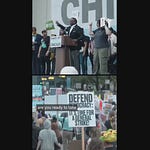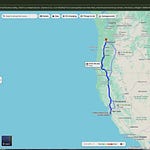This week, my podcast is a few days late, but for the best reason. Our younger daughter and her partner came to Portland for a few days before Thanksgiving. She’s now headed to New Jersey to spend the holiday with her older sister!
The past few days have been a perfect mix of family time, including a trip to the Columbia Employee Store, a karaoke night, and a series of cribbage games at home. (Marsha and I are pleased to report we held a strong record against the kids!)
But beyond the fun, these few days got me thinking about something important. How profoundly the people physically around us shape our work, our thinking, and our lives. Today is November 26th, and this is episode 13.
The science of proximity
Like many parents, we asked our daughter how her work was going. She mentioned she was grateful to be sitting in her office surrounded by the more senior people in her group. Marsha and I were thrilled to hear this, and it reminded us of a fascinating study from the Kellogg School at Northwestern back in 2017. The researchers found that simply sitting within a 25-foot radius of a high-performer improved coworkers’ performance by 15 percent.
I’m not surprised. I agree that just being near excellence makes you better.
This brought to mind one of my favorite stories from The Idea Factory, a book about Bell Labs. Patent attorneys there were trying to identify what the most productive innovators had in common. They discovered something surprising. The most prolific inventors were all people who regularly had breakfast or lunch with Harry Nyquist.
Now, Nyquist himself was a famous innovator. Signal processing folks like me know him for the Nyquist rate, the minimum sampling frequency needed to preserve information. But here’s the thing. Nyquist wasn’t giving these people specific ideas or solutions. What he did was ask questions that drew people out and got them thinking.
Personally, I believe I benefited from sitting next to people that got me to think differently. In my different roles, I’ve sat on the floor with developers, marketers, and sellers, and each got me to think in different ways. As a manager, I’ve personally seen the influences that people have on each other. I was recently reminded of the kegorator I had next to my cube at Barracuda, which could serve as a gathering place at the end of a workday to foster these types of connections.
While I couldn’t find a photo of the kegarator, here’s a screenshot from a humorous internal company video we made, which celebrated this cultural icon.
The Cost of Distance
This is why I worry about all-remote workplaces. The data backs up these concerns.
A major study of 61,000 Microsoft employees over the first six months of 2020 showed that remote work caused workers to spend about 25% less time collaborating with colleagues across groups. They shifted to more asynchronous communication and less real-time interaction. While focused individual work continued, the spontaneous cross-silo conversations that spark innovation largely disappeared.
Then there’s the Nature study that really hit home for me. Researchers asked 1,400 participants to perform brainstorming tasks both in-person and over videoconference. Video participants generated significantly fewer creative ideas than face-to-face teams. The hypothesis? Videoconferencing focuses our attention on a screen, which narrows our cognitive focus.
This matches my own experience. Since retirement, my consulting work has largely been conducted over video. I had one client with a hybrid environment, and I frequently flew out to the corporate HQ because I observed how the “real” meetings often happened off-camera before and after the formal video conferences with all the remote participants. Even in all-remote environments, I have seen how Slack and Slack huddles among subsets of regular meeting participants are just required sometimes to collaborate more freely. Still, for these companies with remote employees, nothing replaces just having folks travel out for offsites, which are expensive but required.
The New Reality
Here’s where it gets complicated. I can’t be a complete purist about this.
We benefited from remote work flexibility this week. Our daughter worked remotely from my office on Monday and Tuesday so she could visit without burning vacation days. And the data shows that hybrid arrangements, where employees work from home two days a week, actually reduce turnover.
Some newer companies are still betting on in-person culture. I recently watched an interview with the CTO of Aurasell, an AI-native CRM company founded post-pandemic, who talked about why they chose to build an in-person-first culture despite the talent crunch.
“We are social beings. When we work together, we are always more innovative and more productive in the long run. That fundamentally cannot be denied, especially when you’re building an innovative product like we’re doing and with the context that you need to have and the way you need to interact, you need to be working with other people in person. When you’re remote, you’re taking calls only when you need them, not the serendipity of you meeting each other and being able to have those conversations at the water cooler in the hallway. Those are the great moments that actually define great pieces of functionality that eventually land in the customer’s hands.”
— Srinivas Bandi, CTO Aurasell as interviewed by @insidethesiliconmind
My own advice for founders is this. I advocate a default in-office environment, with perhaps the exception of just a few specialists who might be remote. I like the default mode of people working together in an office but offering flexibility at specific times. With too much work-from-home flexibility, it’s no longer predictable when people will be available. I am open to schemes like “flexible Fridays” or specific weeks where people are not expected to show up to the office. The week between Christmas and New Year’s is always a good candidate for this type of flexibility whether people choose to take paid-time-off (PTO) at that time of year. And obviously, as evidenced by my daughter’s visit this week, Thanksgiving week in the US is a good candidate for this, too!
Beyond Work
The truth is, this isn’t just about the workplace. It’s about life.
Right now, we live in Portland, but we’re originally from Seattle and spent most of our adult lives in Silicon Valley. We have family and friends scattered across the country. So despite not loving to travel, we do a lot of it. And yes, we do plenty of video calls in our personal lives too.
But the reality is clear. The people who have the biggest impact on our daily lives are the ones we spend the most time with physically. For example, one real surprise is how much I value a friend right in our condo building. We didn’t start by having deep philosophical conversations. We’d go for hikes on weekend days, an occasional lunch, and some other outings (like hanging out with the frogs at a Portland ICE protest and karaoke!) Still, somehow as time went on, we just started sharing more, and I really feel like we experience the texture of each other’s day-to-day lives.
Contrast that with one of my really good friends in California. We were former coworkers, and I feel like we’ll be friends for life. (Our horoscopes on “The Pattern” even reveal past life karmic links!) We still do regular Facetime calls every two weeks that often cover very deep topics, we still send each other goofy Apple Watch text messages, and we have great conversations when we visit. Still, proximity matters even though the intentionality to stay close is strong. Technology certainly helps, but it’s somehow just not the same as being together.
How about you?
So here’s what I’ve been thinking about this week. My younger daughter is sitting in an office surrounded by people who will make her better just by being there. She gets to have her version of time with Harry Nyquist from AT&T Bell Labs on a regular basis.
Here’s a question I’ll leave you with. Who are the people in your 25-foot radius right now, and are you making the most of that proximity?
I’d love to hear from you! As I’ve mentioned before, one of the real values I get from this Substack is the conversations with friends both near and far. Even if we’re at a distance, I still have appreciated the outreach.
And, for those of you who have been consuming the video content, this is probably the last one of these I’ll do for a while. I tried out this format for a 13-week quarter, but I’ve realized that the time filming and editing videos was taking time away from expressing and formulating the ideas themselves, which is the part I was really valuing from this exercise. I may return to this at some point in the future if you have ideas for me to make all of these better, and I’d appreciate your thoughts on this, too!
Happy Thanksgiving, everyone!











